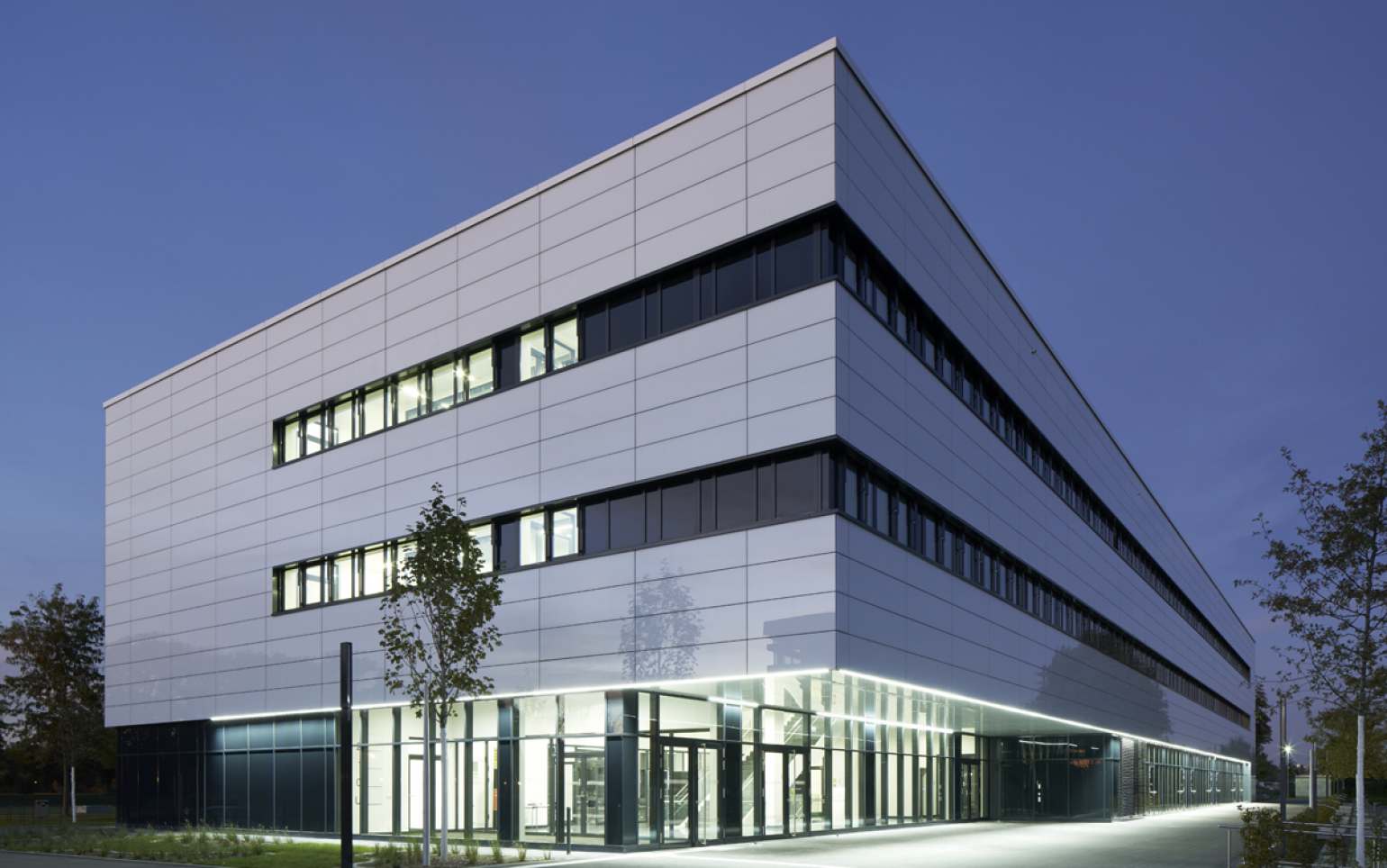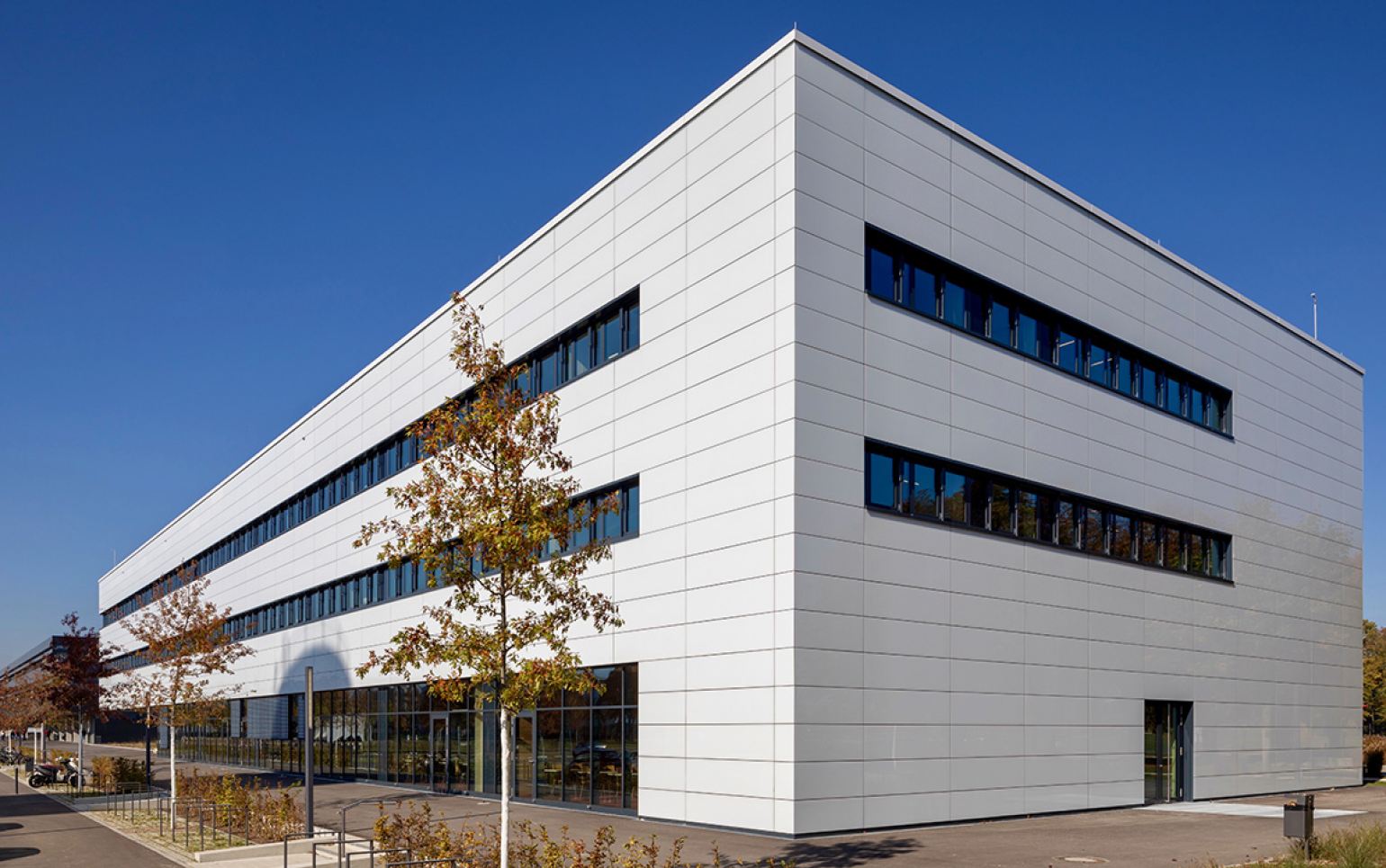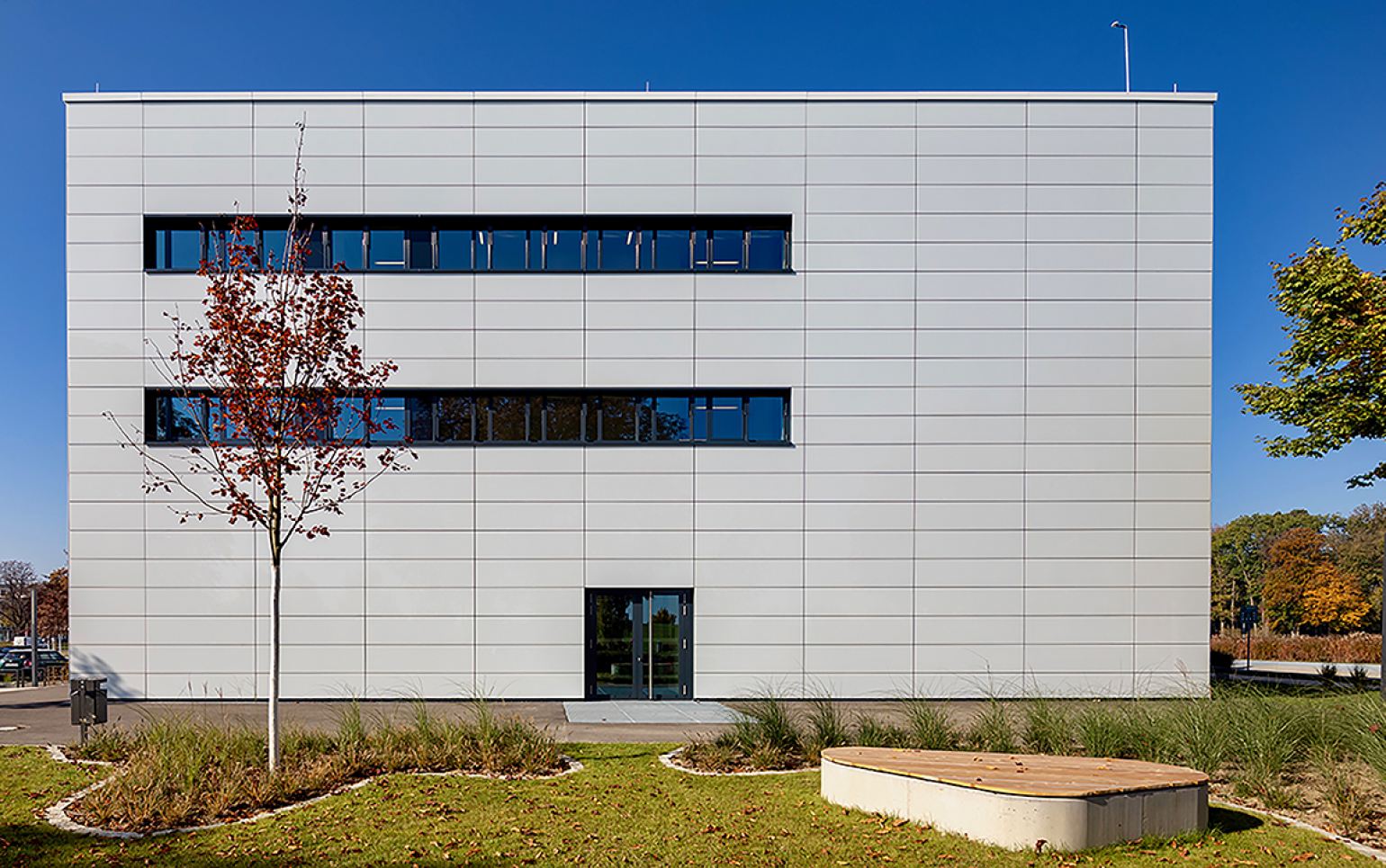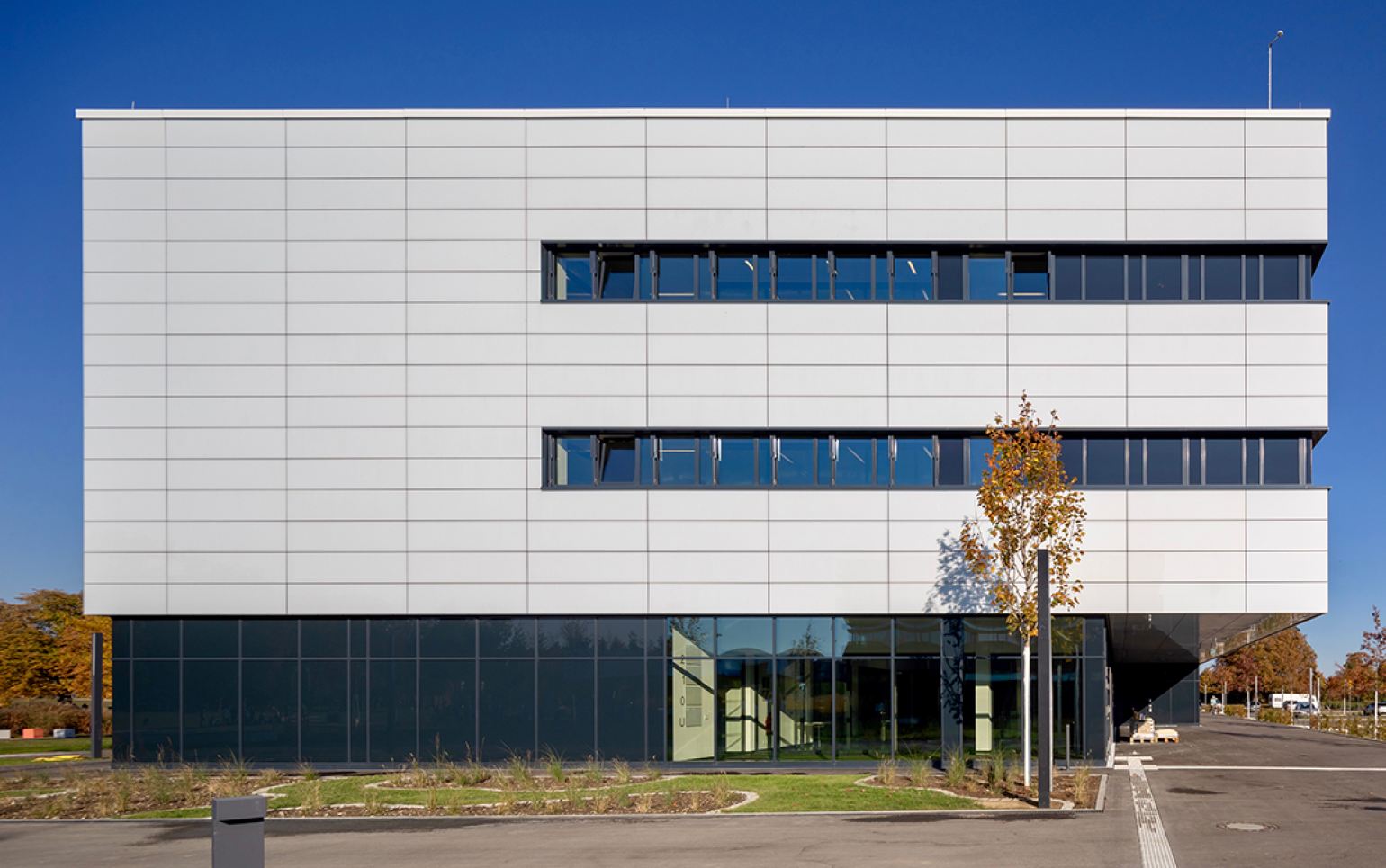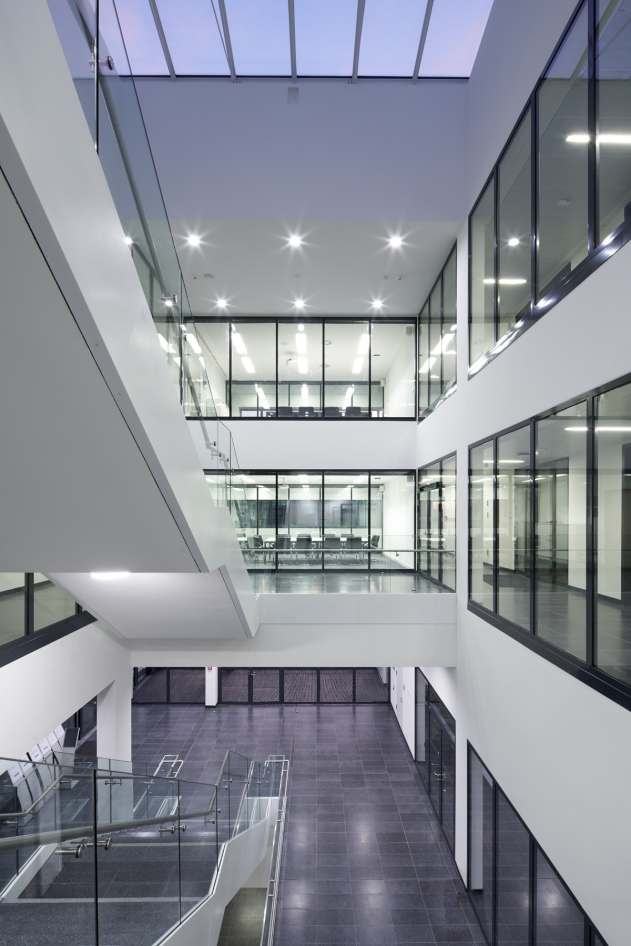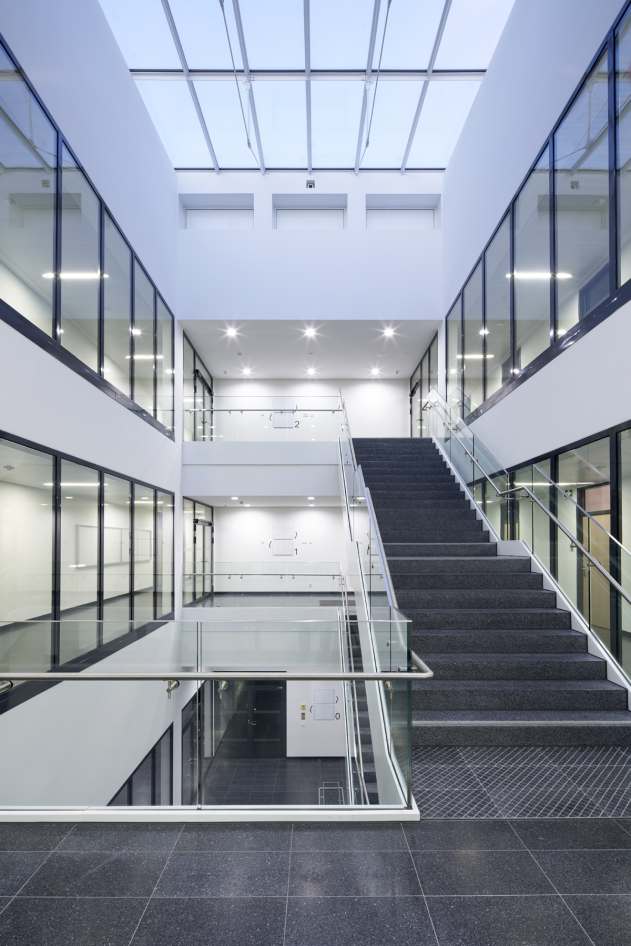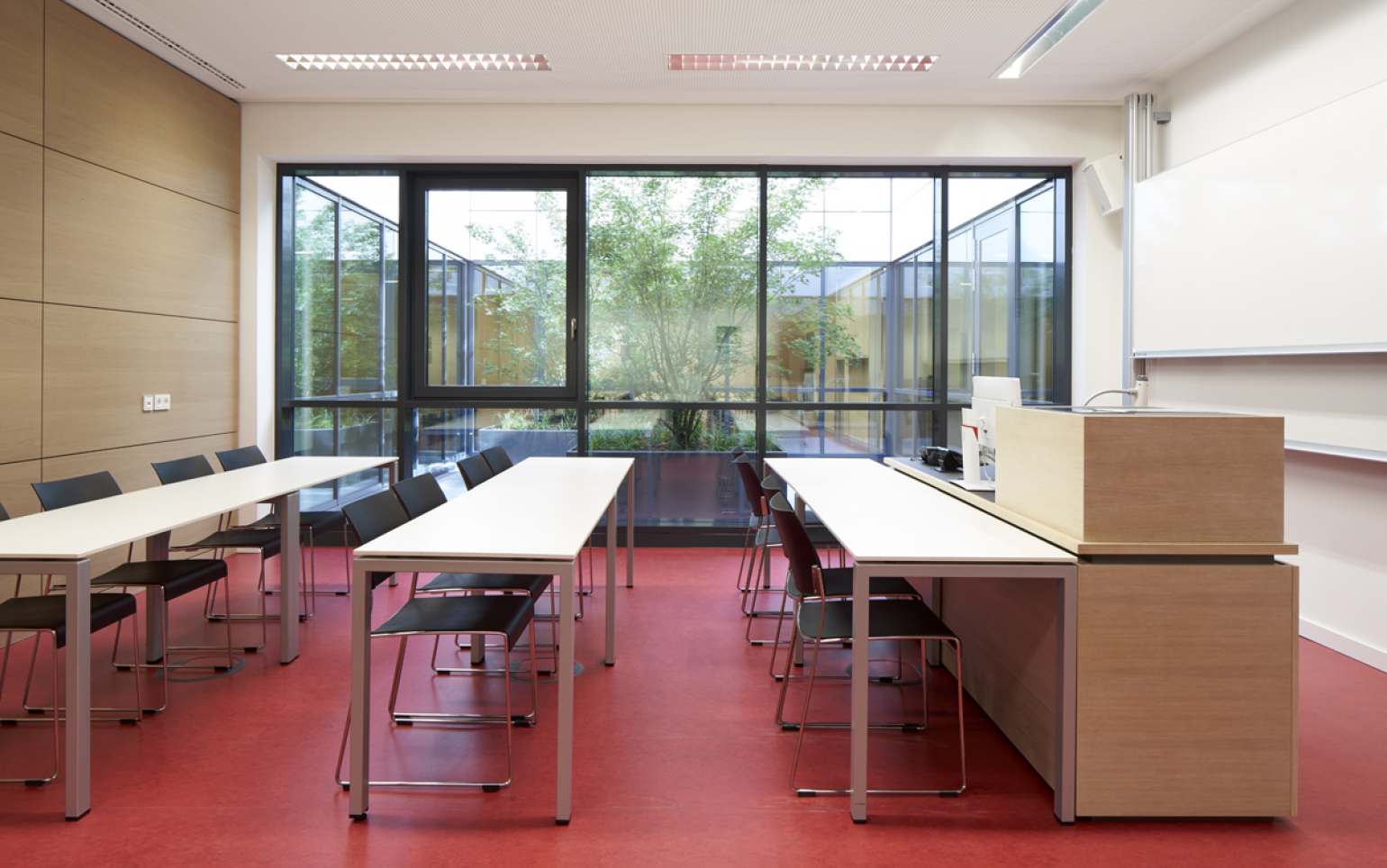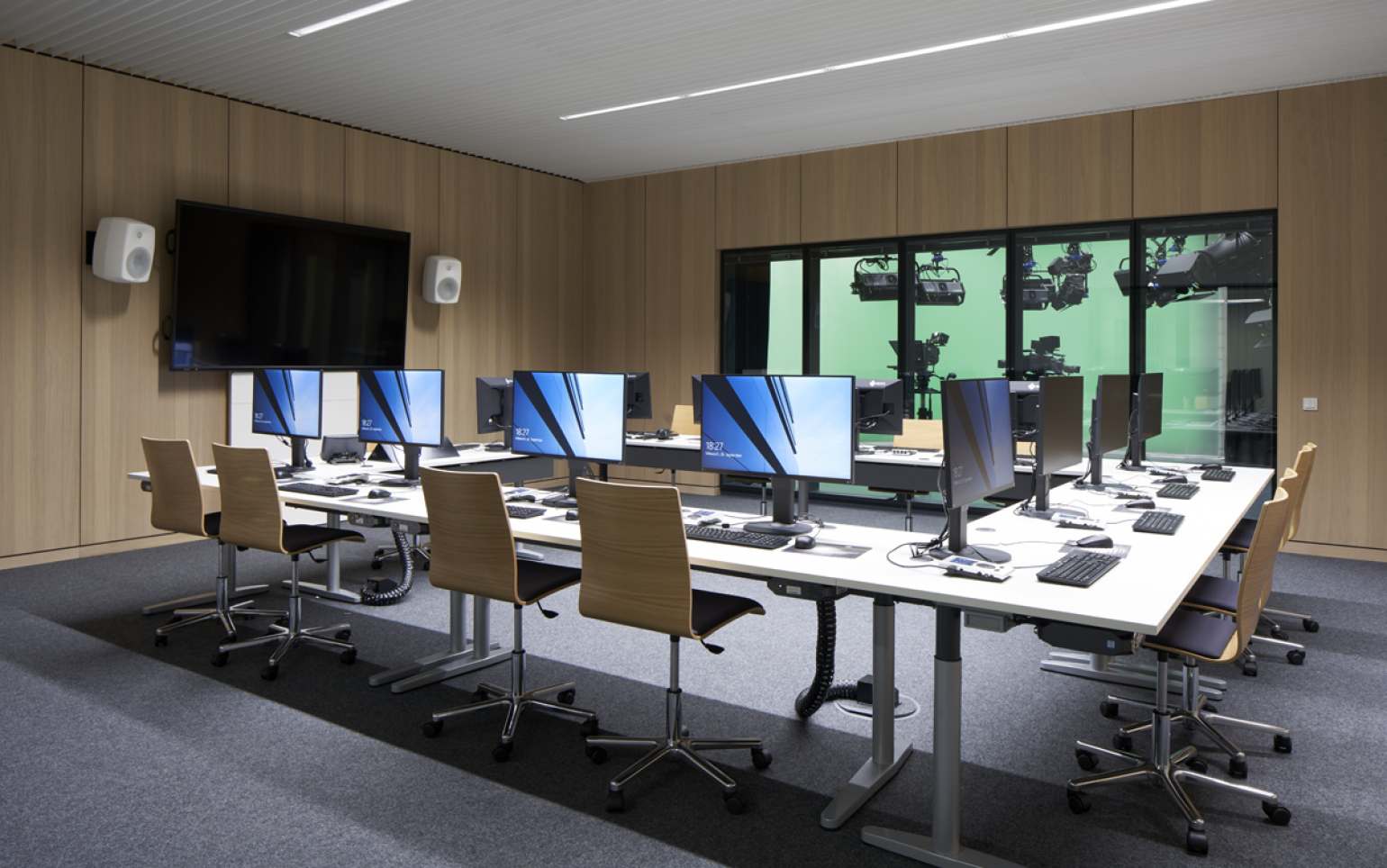Neu-Ulm University of Applied Sciences, 2nd Construction Phase
Client
Freistaat Bayern, vertreten durch das Staatliche Bauamt Krumbach
Negotiated procedere Top rank
2014
Start of Planning - Completion
2014 - 2018
Performance phases
2 - 8
Building data
Total cost 25,900,000 €
Gross floor area 8,046 m²
The extension of Neu-Ulm UAS is a continuation of the first phase of construction to the east of the existing building. The buildings form an urban boundary to the public green area (former state garden show) in the north and a "gateway to the park".
A spatial incision in the clear, cubic, three-story structure marks the main entrance and creates a covered reception area. An open staircase leads from a generous entrance foyer, providing access to two upper floors, which are organized with triple-loaded corridors, with an atrium supplying natural light to the corridors and staircase. On the ground floor, the triple-loaded arrangement changes to double-loaded to serve other usage requirements.
The compact building provides space for administration and teaching with meeting rooms, seminar and IT rooms, language labs, automotive and logistics labs, a media center with newsroom, a photography and recording studio, control rooms and voice booths, as well as student and staff lounges. A ground-floor cafeteria is generously glazed towards the foyer, allowing unobstructed sightlines between the park in the north and the open spaces in the south.
Although the extension picks up on the 1st construction phase in terms of building alignment, dimension and horizontality, it contrasts from the black of the existing building with white and presents its own language in the detailing, materiality and design of the facade and interior spaces.
The facade is structured by horizontal circumferential banding – an interplay of closed surfaces featuring white composite glass curtain panels and glazed window bands. A cantilevered, colored sunshade on the upper floors towards the south, east and west adds another spatial dimension to the building and gives the facade a bright, lively appearance.

